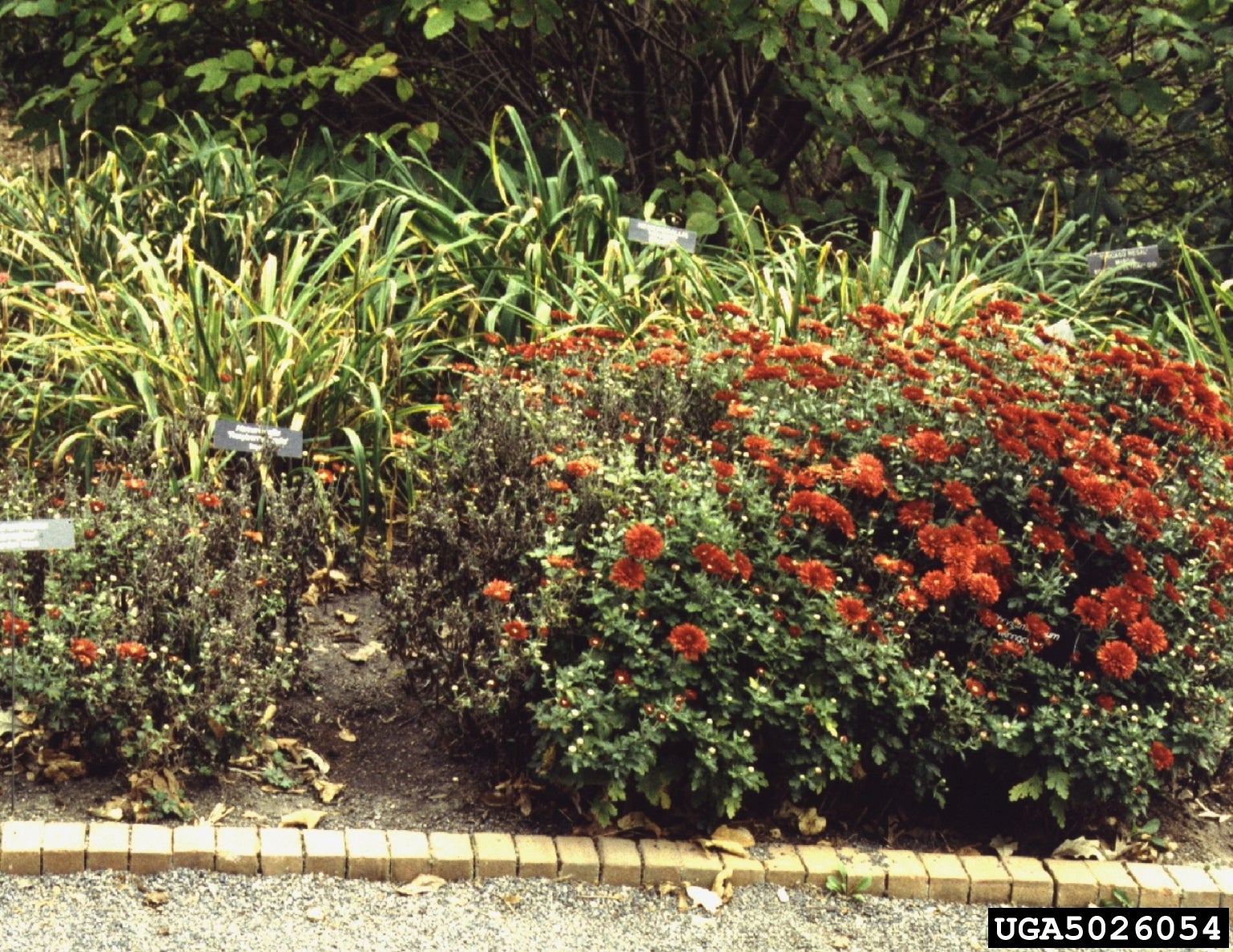Treating Foliar Nematodes On Mums – Learn About Chrysanthemum Foliar Nematodes


Chrysanthemums are a fall favorite, growing in combination with asters, pumpkins, and decorative winter squash, often displayed on bales of hay. Healthy plants fully flower and remain beautiful for several weeks with minimal care…unless the plants are hit by foliar nematodes (Aphelenchoides ritzema-bosi).
Foliar Nematodes on Chrysanthemum
What are foliar nematodes? They are tiny, unsegmented roundworms that swim in a film of water, according to pest information. Lesions appear and bottom leaves turn yellow and brownish, dropping when infected.
Chrysanthemum foliar nematodes move up the stem, to higher leaves and the process continues. If you see this issue occurring on your mums, remove bottom leaves that are dying and avoid overhead watering.
Treat healthy leaves that remain with a spray of insecticidal soap to decrease the nematode population. If desired, this might be a good time to replant into fresh soil. Nematodes often overwinter in soil and become active when watering begins, especially when water touches the leaves. Dispose of potentially infected soil by getting it off your property.
Treating Foliar Nematodes on Mums
It is prudent to begin foliar nematode treatment before damage appears. Check new plants when you bring them onto your property and seclude them for a few days, away from your other plants. This is a good practice for all new plants and a good way to avoid pest and disease infestations among your existing plants.
Also, avoid all overhead watering of plants and water at the roots when you can. Allow space between plants for air circulation, also necessary to keep plants healthy.
If your plants already show symptoms of foliar nematodes on chrysanthemums, follow the tips above. When spraying with insecticidal soap, make sure the sun is not shining on the plant. You may also treat with neem oil.
Gardening tips, videos, info and more delivered right to your inbox!
Sign up for the Gardening Know How newsletter today and receive a free copy of our e-book "How to Grow Delicious Tomatoes".
If you use a greenhouse for overwintering plants, keep in mind that these nematodes may live on weeds growing there. Foliar nematodes infect more than 200 different plant varieties.
Once you put these tips into practice, you’ll have healthy, long blooming mums for your autumn display. Your other plants may benefit too.

Becca Badgett was a regular contributor to Gardening Know How for ten years. Co-author of the book How to Grow an EMERGENCY Garden, Becca specializes in succulent and cactus gardening.
-
 Moody Blooms For Spring: 8 Types Of Black Flowers To Add Drama To Spring Displays
Moody Blooms For Spring: 8 Types Of Black Flowers To Add Drama To Spring DisplaysFrom midnight burgundies to inky violets, several types of black flowers can enrich and embolden a spring display. Try these brooding bloomers for a moody garden
By Tonya Barnett
-
 Can Snake Plants Live Outside? Everything You Need To Know For Snake Plants Al Fresco
Can Snake Plants Live Outside? Everything You Need To Know For Snake Plants Al FrescoSnake plants can live outside given the right conditions, but be careful that they don't take over! Learn the best way to use snake plants in your landscape.
By Mary Ellen Ellis